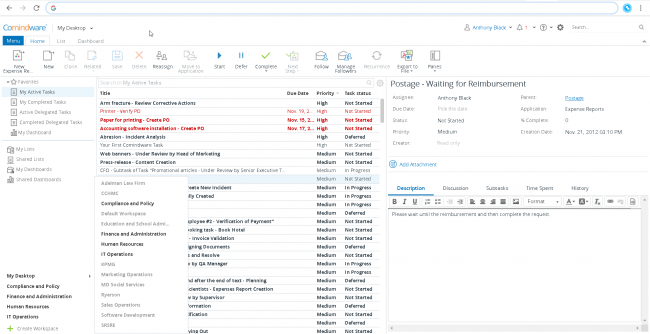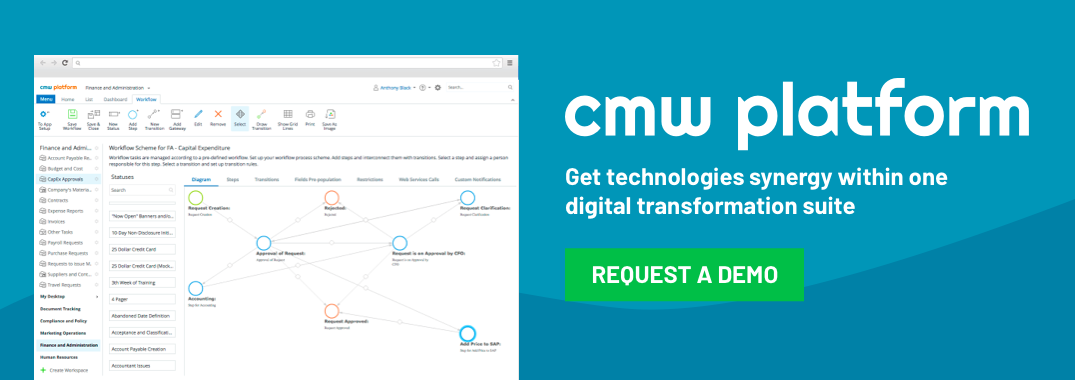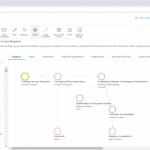What is BPMS?
Wednesday, August 5, 2020
BPMS refers to business process management software. These are software tools that provide for advanced automation, integration with a range of other software systems, and the improvement of business process efficiency. This is a powerful set of tools that can automate and manage a wide range of even complex business functions, improving efficiency, and reducing the need for human data entry, which also reduces error.
The definitions of each step are highly important in developing an automation process. It helps to break down tasks into individual steps. This is a vital first step towards automation. It will entail people along every step of the process to be involved to create an automated process that takes into account everything that is entailed in a particular business process. The process will only be as good as the instructions given to the software.
By documenting and carefully planning each step in a process, users can monitor and track data along the way to ensure that the process is working as desired. These business processes can be shared amongst those who need it in a range of different formats, allowing for increased transparency as well.
Next comes the process of automation. This is where employees can save a ton of valuable time and thus, save the company money. Automation functions can reduce the need for employees to perform basic daily tasks like data entry and starting or stopping processes. This automation can often be utilized with minimal human input with the use of workflow automation software, further reducing the need for people to manage basic daily functions.

Analytics tools provided in the automation software suites are also incredibly valuable. These tools provide invaluable data about the business and various aspects of performance. This allows you to see how well processes are working. You can look at data from the process overall and even drill down to data about specific aspects of the process. This not only helps with transparency but it can help you document historical trends that may be useful at some point in the future.
The metrics and analytics tools are vital to ensuring that automated processes are running smoothly and providing the needed result. Users need the ability to monitor the progress of and usefulness of various KPIs. This is how you determine which aspects have value and which should be revisited or eliminated.
The SMART process
This is a time-honored means of evaluating and measuring business performance and giving users the means to find ways of improvement to aspects of these processes. SMART is an acronym that refers to the following: specific, measurable, attainable, relevant, and time-bound. Let’s take a look at each of these briefly in turn.
- Specific: This means that any metrics or data points used in a process need to be very specific and detailed and directly related to the main goals or needs of the business.
- Measurable: any goals or metrics that are important to the business process must be measurable. This means that you need to ensure that metrics are kept that are accurate and can provide meaningful information for strategic planning.
- Attainable: goals that are set should be ones that can realistically be attained. Setting goals that are out-of-reach sets one up for failure and don’t help to further the business.
- Relevant: the data and statistics that you capture need to be relevant to the process at hand. What kind of metrics do you need to help ensure the success of the goal at hand?
- Time-bound: Any metrics captured need to be time-sensitive to ensure that the data being provided is useful and can be acted upon promptly.
In summary
There is a lot of value in the use of BPMS, most of which we barely touched on in this brief article. Business process management software, like Comindware Tracker, allows users to easily automate, track, and adjust various business processes. With proper planning, good definitions and process flow, and the use of available metrics, businesses can dramatically improve the efficiency of a wide range of business functions, reducing the need for human data input, thus also reducing incidences of human error, which often cost time and money. Using the SMART process to develop and evaluate processes can help to ensure that you get the most out of this powerful software and see the myriad of benefits it can provide for your business. It is worth a try!





Posted on: in Bpm, BPMS